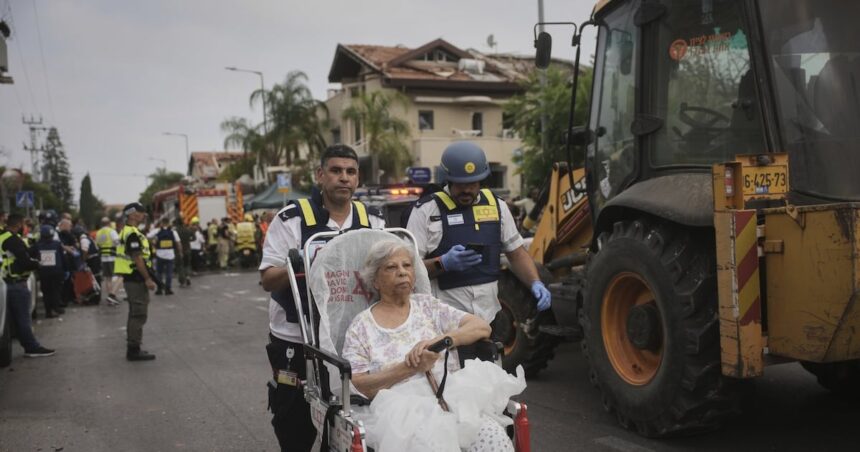The predawn skies over Tehran erupted in flames early Saturday as Israeli warplanes conducted precision strikes against Iran’s Defense Ministry complex, marking a dramatic escalation in the region’s most volatile military confrontation this decade. The attack comes just hours after Iran launched its third wave of ballistic missiles toward Israeli territory, intensifying fears that the Middle East stands at the precipice of all-out war.
“We are witnessing a dangerous game of brinkmanship,” said Dr. Elham Fakhro, Middle East analyst at the International Crisis Group. “Each retaliatory strike raises the stakes exponentially, narrowing the diplomatic off-ramps available to both sides.”
Israeli Defense Forces confirmed the operation targeted key military infrastructure linked to Iran’s missile development program. The surgical strike reportedly avoided civilian facilities while delivering significant damage to underground bunkers housing components for Tehran’s advanced weapons systems, according to satellite imagery analysis from defense intelligence firm Stratfor.
Iranian state media acknowledged the attack but downplayed its impact, claiming air defense systems intercepted “most hostile projectiles.” However, independent verification from local sources confirms substantial structural damage to at least three buildings within the sprawling defense complex located in Tehran’s eastern suburbs.
The assault represents Israel’s most significant direct military action against Iranian territory since the current conflict began following Iran’s unprecedented drone and missile barrage in April 2025. That initial attack, which Tehran characterized as retaliation for Israel’s strike on Iranian diplomats in Damascus, marked the first direct military confrontation between the two adversaries after decades of proxy warfare.
Canada’s Foreign Affairs Minister issued a statement urging immediate de-escalation while acknowledging Israel’s right to self-defense. “The cycle of retaliatory strikes threatens regional stability and undermines prospects for peaceful resolution,” the statement read, reflecting growing international concern about the conflict’s expansion.
Oil markets responded swiftly to the developments, with Brent crude jumping 6.8% to $113 per barrel in early trading—its highest level since 2022. Energy analysts warn that continued hostilities could potentially disrupt critical shipping lanes in the Persian Gulf, through which approximately 20% of the world’s oil supply passes daily.
The escalation occurs against a backdrop of shifting political dynamics across the region. Saudi Arabia and other Gulf states have maintained careful neutrality, balancing historical antagonism toward Iran with reluctance to fully align with Israel. Meanwhile, Russia and China have called for restraint while implicitly supporting Iran’s position at the United Nations Security Council.
Humanitarian organizations report growing civilian anxiety on both sides. In Tehran, residents describe sporadic power outages and increased military presence throughout the capital. “People are stockpiling essentials, withdrawing cash, and preparing for worse to come,” said Reza Marashi, an Iranian-American journalist currently in Tehran.
Similarly, Israeli civilians in northern communities have returned to bomb shelters, with schools closed indefinitely in areas vulnerable to missile strikes. Tel Aviv’s Ben Gurion Airport temporarily suspended operations during the Iranian missile barrage, though international flights have since resumed with altered flight paths.
Military analysts suggest Israel’s strategy aims to degrade Iran’s missile capabilities while avoiding targets that might trigger full-scale war. “This is calibrated escalation,” explains retired IDF General Amos Yadlin. “Israel is sending a message that it can strike inside Iran with precision while attempting to leave room for eventual de-escalation.”
The question now confronting regional powers and the international community is whether diplomatic channels can prevail before miscalculation drives further military action. As missile defense systems on both sides face increasingly sophisticated challenges, can leaders step back from what increasingly resembles a path toward comprehensive regional conflict?










